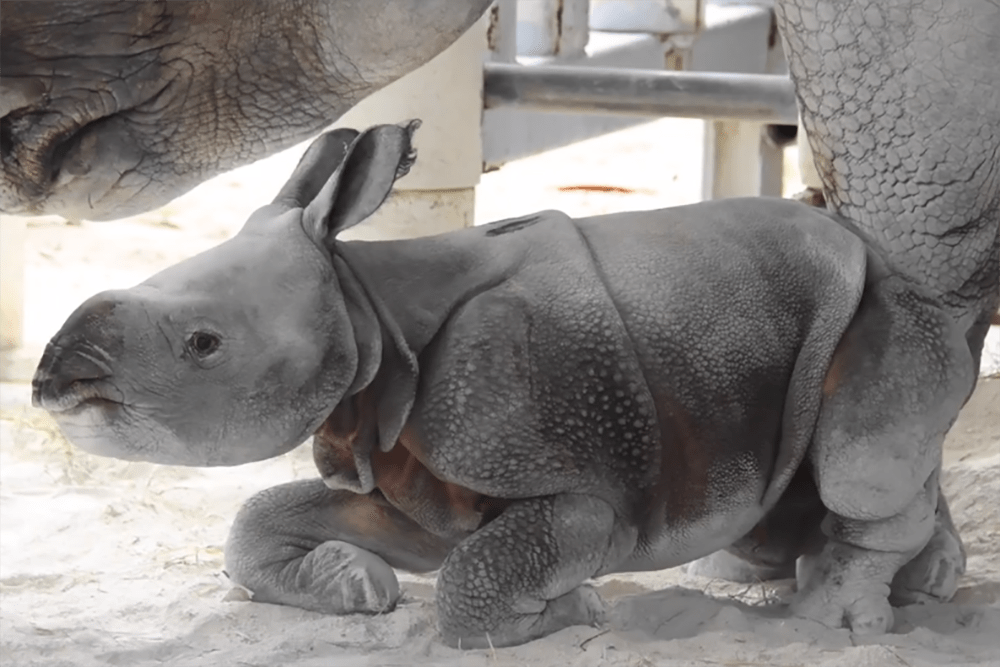Advertisement
'It's Really Great News': Rare One-Horned Indian Rhino Born In Captivity
Resume
A one-horned Indian rhino recently born at Zoo Miami is unquestionably adorable. But more importantly, it's a sign of hope for an endangered species.
The rhino was born as a result of both artificial insemination and forced ovulation. Researchers had been struggling to achieve natural conception, which led them to try "assisted reproduction" methods.
"It's really great news, because to save some of these endangered species, we need every tool we can get in our toolbox. Assisted reproduction is one of those tools," says Terri Roth, vice president of Asia programs at the International Rhino Foundation. "Seeing these little babies produced by artificial insemination when otherwise they may never have been born, it's very exciting for us."
The one-horned Indian rhino is endangered — there are about 3,500 of them in the wild — but it has been making a comeback in recent years, Roth tells Here & Now's Peter O'Dowd. The prevailing attitude about the species' future is one of nervous optimism.
"Poaching is still a huge problem for these animals, not only in Africa but also in Asia," she says.
That problem persists largely thanks to a false belief that rhino horn holds medicinal and healing properties "which it really does not have," Roth explains.
"Every birth makes a difference when you're talking about a species where there's only 3,500 in existence."
Terri Roth
In all likelihood, this baby rhino won't ever be introduced into the wild. But Roth says there is a chance other animals born in captivity could in the future. The focus with these captivity-bred animals is to establish a kind of insurance policy should the wild rhino population dwindle even further.
"What we do in our zoos is we try to make sure that our populations are backup populations — even though we're trying to save the wild ones at the same time, you can ever be too sure that a species is going to exist long term," she says. "Every birth makes a difference when you're talking about a species where there's only 3,500 in existence."
And in case you're wondering: No, the baby was not born with a horn.
"They have a flat little spot on their nose where the horn is going to grow as soon as they come out of the female, and it'll start growing right away," Roth says. "But no, it's pretty smooth when they're born — thank goodness."
Mark Navin produced this interview and edited it for broadcast with Kathleen McKenna. Jack Mitchell adapted it for the web.
This segment aired on April 29, 2019.

